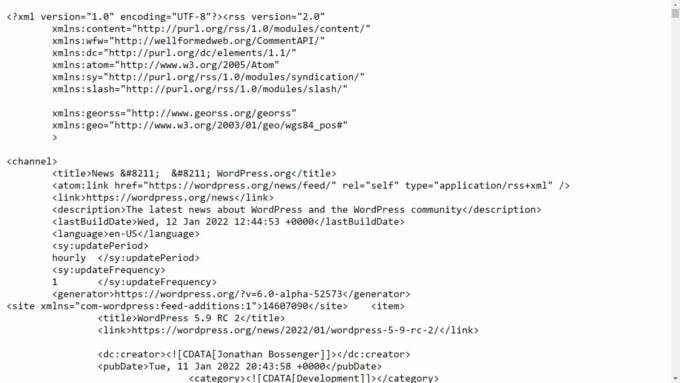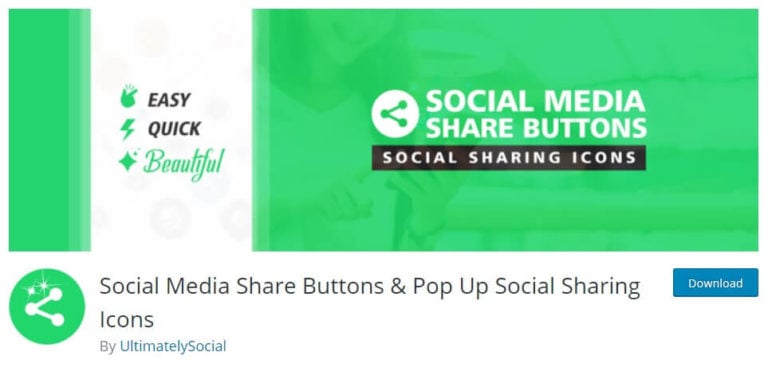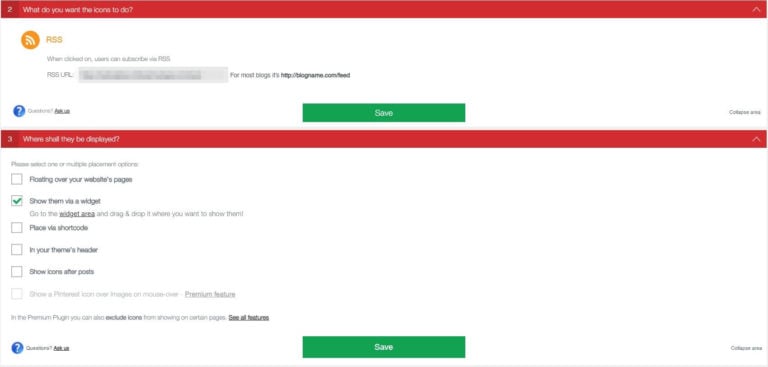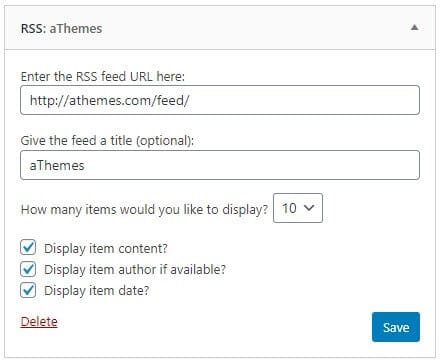What is the Rss Feed for My Wordpress Website
People today have access to an astounding amount of online content. With approximately 1.1 billion active websites competing for their attention, many are feeling overwhelmed and looking to simplify with aggregators. However, keeping your content available on the many platforms offering this service can sound like an impossible task.
Fortunately, RSS can make it simple. By adding an RSS feed to your WordPress site, you can supply compatible services with updated content directly from your posts. This feature can also be used to enhance your site with content from other sources.
In this article, I'll cover what RSS is and discuss the benefits of adding it to your WordPress site. I'll also take you through how to add RSS to WordPress, whether you want to share your content or incorporate someone else's. Let's get started!
Really Simple Syndication (RSS) works by converting a website's content into a simple format, which RSS readers can translate into a content feed. Without a reader, these feeds don't look like much.
For example, here's what the WordPress blog's RSS feed looks on its own:

Plug that same URL into a reader such as Feedly, and it ends up looking something like this:

That feed will automatically update as WordPress posts new content associated with the set URL. You can do this with any RSS URL to make a home page that has the updates that you're interested in seeing without requiring you to visit many different websites — and so can your visitors.
Offering an RSS feed for your site is an easy way to give people quicker access to your content. Feedly alone currently boasts an estimated 15 million users. Setting up an RSS link is a simple process with little to no upkeep involved, making it a low-investment way to tap into that market.
The main attraction of RSS feeds is that they help to centralize curated content. If you set up an RSS feed on your site, you're giving your users a way to save time. They no longer have to manually check your website for new posts. Instead, updates will automatically be sent to their feed readers of choice.
This means that they'll be able to quickly access your content when they're looking for it — and when they're not. Since the RSS feed will update automatically, your posts might catch their eye even when they weren't actively seeking them out.
This helps to keep your brand at the top of their minds. The increase in exposure can, in turn, boost your numbers of returning visitors and their levels of engagement.
Not only are these factors beneficial, Google also looks at both when deciding how to rank your website in its search results. Since Google accounts for roughly 62% of internet searches, adding an RSS feed is one way to build an SEO-friendly site.
Your RSS feed can also serve a practical function for you. Linking social media accounts such as Facebook or Twitter to your RSS URL will automatically update those platforms with your site's posts. This can help you maintain your own unique website, while also catering to the estimated 4.48 billion people using social media.
That's not all RSS can do, however. It can also be a powerful tool for incorporating other sources into your site using the same principles. WordPress comes with a feed reader widget, which you can set up to display the RSS feed of any website with an RSS URL.
For example, if you run a travel website, you might integrate an airline's RSS feed listing its current fares. This can help you provide visitors with relevant information from your industry.
In a nutshell, RSS is a simple and effective way to retrieve or provide up-to-date information. Best of all, you can access these benefits easily with a quick setup process and little if any upkeep.
Whether you're looking to share your content with others or use outside sources to support your site, setting up an RSS feed with WordPress is straightforward. Let's look at two ways to approach this process.
Let's start with how to provide your visitors with a way to access your RSS feed. You'll probably be happy to hear that it's a simple process — for both you and your visitors. All you'll need is a social media plugin and a little bit of time.
Before we move forward, however, there's a chance that you may not even need a plugin. Many theme makers are aware of the benefits of RSS and have built this feature into their designs. While each theme is different, a cursory glance through your site may reveal if yours has this feature.
For example, you can check your social media settings for an RSS icon. If you find it, you already have an RSS button on your site and won't need a plugin. If this kind of out-of-the-box feature is important to you, you might want to consider RSS functionality when looking for a theme.
If your theme doesn't have this option, a plugin will do the trick. For the purpose of this walkthrough, we'll use the Social Media Share Buttons plugin:

In addition to giving you an RSS button, it's also a quality all-in-one tool that offers buttons for several social media sites, which you can mix and match to fit your brand.
If this plugin doesn't suit your needs, don't worry. There are many other strong options for adding an RSS button and other social media features.
1.2. Install the Plugin and Set Up Your Feed
Once you've chosen your plugin, you can install and activate it. To complete the setup process, you'll need to find your website's specific RSS URL. This is what will tell readers where to find your content. Fortunately, WordPress makes this easy for you — you only need to add "/feed/" to the end of your website's URL.
For example, the aThemes RSS URL is https://athemes.com/feed/. Just make sure to replace "athemes.com" with your site's domain. Click on the sidebar link for your chosen plugin, and follow the on-screen instructions to enter your unique URL:

When deciding how the RSS feed should display on your site, I recommend the Show them via a widget option. It blends well into the rest of the WordPress infrastructure, making the whole experience more intuitive:

Once you're finished, click on Save to continue.
Now that the feed is saved, you can decide where you want it displayed. Navigate to your widgets and locate the one labeled Ultimate Social Media Icons. There will also be a widget titled Ultimate Social Subscribe Form, which prompts visitors to enter their email addresses for updates instead of providing your RSS URL, so make sure you select the right option.
Drag and drop the widget to the part of your site where you want it to show up. You'll also be given the option to title it. "Subscribe to RSS" and "Never miss a post!" are good options, but you can also leave this field blank, depending on how you want it to appear.
That's it! You've now added an RSS button to your website. With that done, visitors can easily add your content to their favorite feeds. From here on out, the URL will automatically collect and distribute your WordPress posts.
2. Use a Native Widget to Add Outside Feeds
You can also display RSS URLs from other sources to enhance your site. Fortunately, WordPress comes with a widget to help you do that. All you'll need to do is find the RSS information for whatever feed you'd like to display.
As we saw in the previous walkthrough, some sites advertise this option using the telltale orange RSS icon alongside other social media buttons. If you can't find one, using a search engine can also help you locate the correct RSS URL.
Additionally, if the site runs on WordPress, try adding "/feed" to the end of its URL (just as you did with your own site earlier). Copy the RSS URL once you've found it, and navigate to your site's widget page:

Decide where you want this feed to be displayed, and drag and drop the RSS widget accordingly. Enter the RSS URL you copied earlier, and you'll then be able to make some formatting decisions.
Author credits, dates, excerpts, and a number of other options can be mixed and matched to achieve the look you're going for. If you prefer a minimalist aesthetic, you can also opt to display as little information as possible.
When you're done, the feed should be displayed in your chosen area. Similar to your own feed, this area will continuously populate according to your specifications, as the external site produces new content.
You can try to make the most use of this function by sharing feeds with content about your industry that you find interesting. If you have another website or partner that you'd like to cross-promote, this is also a natural way to do it without disrupting your page's flow or feeling too forced.
You can have one RSS feed displayed on your site or multiple ones, depending on your needs. It's a quick process that's easy to undo, so don't be afraid to play around with it to maximize your site's functionality!
Conclusion
In today's busy world, people are often overloaded with content from countless sources. The good news is that there's no need for users to check hundreds of sites or for creators to maintain dozens of accounts. By adding RSS to WordPress, you can help make your content more accessible and informative.
In this article, I walked you through two simple ways to add RSS to your WordPress site:
- Providing visitors with your site's RSS information using a plugin, such as Social Media Share Buttons.
- Displaying RSS information from another website to support your own content.
What kind of content will you share with RSS? Let us know in the comments section below!
Searching for a free, professional and lightweight WordPress theme? Meet Sydney!
View Theme
Source: https://athemes.com/tutorials/add-rss-feed-to-wordpress/
0 Response to "What is the Rss Feed for My Wordpress Website"
Post a Comment